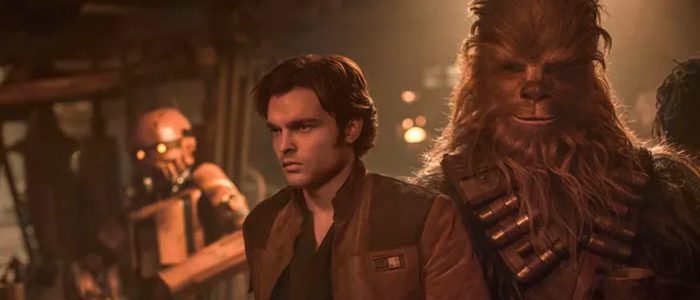The Han Solo Movie That Almost Was: How The New Art Book Reveals A Very Different Film
Through multiple screenplay drafts and a troubled production, Solo: A Star Wars story changed significantly from conception to realization. With the help of the newly released art book tracking the film's development and production, we try to get to the heart of the Solo movie that almost was, but never will be.
Things Change
In 2012, Disney bought Lucasfilm, and the Star Wars universe would never be the same. Star Wars creator George Lucas had already laid out plans for future Star Wars films before the purchase, and after the sale, Lucasfilm President Kathleen Kennedy set about making those plans into a reality.But things change. After the announcement of a new trilogy, kicking-off with the film that would become The Force Awakens, Kennedy and company set in motion plans for two spin-off films – films that would eventually go under the banner of Star Wars Story movies. One was a still-unmade script by Simon Kinberg, focusing on Boba Fett.The other was about young Han Solo. Lawrence Kasdan, writer of The Empire Strikes Back and The Return of the Jedi, had been summoned to Skywalker Ranch before the Disney sale had even been finalized. There, he met with Lucas and Kennedy. "George had sort of roughed-out many movies – not just the new trilogy, but other movies, the spinoffs and things," Kasdan later said. "I wasn't sure I wanted to do anything, but I said, 'I could do the Han Solo movie' – because he's my favorite character. He's reckless. He's feckless. He's cynical. He's tough. He's pragmatic. He's not that smart. I like that. He's the most fun."The idea was that Kasdan's Han Solo movie would hit theaters after The Force Awakens. But remember – things change. Kasdan eventually got pulled into co-writing The Force Awakens, which put his Solo film on the backburner. As time ticked on, Disney and Lucasfilm would get to work on yet another Star Wars film – Rogue One.Solo wouldn't find its way to theaters until after the second film in the new trilogy – The Last Jedi. And by the time it finally hit theaters, the ideas Kasdan started with, and the planned film itself, went through a seismic shift. Things change.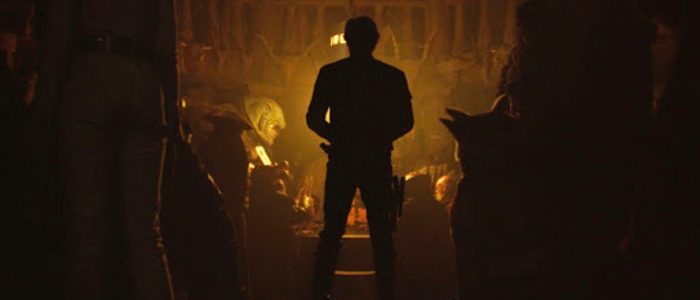
Something Special
In its current form, Solo: A Star Wars Story is...fine. It's neither a disaster, nor a game changer. It doesn't have the nostalgic fun of The Force Awakens, nor does it have the introspective brilliance of The Last Jedi. It's a piece of pulp – a whiz-bang greatest hits compilation. There's nothing really wrong with this. What was Lucas' original Star Wars, after all, but pulp entertainment drawing on adventure stories that came before it?The biggest problem Solo has is that it can't really stand on its own legs. Yes, The Force Awakens recycles elements from A New Hope, but it brings in a new generation of characters who make the story seem fresh. And I think we can all agree – fans and haters alike – that The Last Jedi is completely different than any other Star Wars film before it. Solo, in contrast, feels like it's going through the motions. It's giving audiences everything they expect from a Han Solo origin story in an easily digestible package. Under the steady hand of Ron Howard – a workman director who is also very good at his job – Solo goes down easy and leaves you feeling mostly satisfied.But it didn't have to be like this. By now, mostly everyone knows that Solo's original directors, Phil Lord and Chris Miller, were fired from the project. I do not worship at the altar of Lord and Miller – I think they're pretty good at what they do, but I've seen some people herald them as "geniuses", which, frankly, is a bit much. Yet, through interviews and background info, it's clear that Lord and Miller's vision for Solo would've made the film distinct.One big element supporting this is the newly released book The Art of Solo: A Star Wars Story. The book is packed with over hundreds of illustrations of concept art, as well as details about early storylines from Lawrence Kasdan's outlines and scripts. Yet one thing the book is missing is any mention of director. Neither Ron Howard nor Lord and Miller are brought up anywhere within the pages of The Art of Solo. In sharp contrast, Last Jedi director Rian Johnson is a constant presence in the Art of the Last Jedi book. Because that film was truly his vision.But who does Solo belong to? As you thumb through the pages of the art book, it seems like the film was created solely by artists and Kasdan. Yet those artists, and Kasdan's script, were working for Lord and Miller originally. The bulk of the prep work they did was for the film Lord and Miller wanted to make. And it becomes abundantly clear that the duo had something really special in mind.So what happened?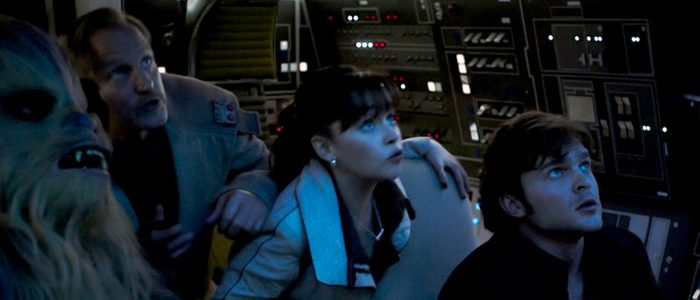
Overtime
In the opening pages of The Art of Solo, production designer Neil Lamont calls Solo "a period film set in the late sixties, drawing inspiration from a wealth of sources and feelings: cool, hip, retro, lo-fi, muscle cars, Shaft, Route 66, traveling east to west across the United states, Jimi Hendrix, a boy's dream (back then), the height of the Cold War, the arms race, 2001: A Space Odyssey, McCabe & Mrs. Miller, Planet of the Apes and The Driver."Here's the thing: there's no way Lamont is talking about Solo as it exists now. Save for a few scenes here and there, none of that gritty late sixties vibe comes through with Howard's film. Which means it's safe to assume that this might have been what Lord and Miller were going for. Another clue to this comes from Solo cinematographer Bradford Young.Young is the true star of Solo – whatever you think of the film, it's impossible to deny how stunning his cinematography looks. Deep, murky blues; sickly yellows – the shots Young create here look like nothing else in the Star Wars universe. Young was hired by Lord and Miller. "I met with Phil and Chris, and their constant reference was McCabe & Mrs. Miller," Young said. McCabe & Mrs. Miller is Robert Altman's brilliant, melancholy anti-Western – a film caked in mud and regret. "They said they were making a Western."When Lord and Miller were first hired to helm Solo, the assumption was that they would likely craft a comedy. After all, they come from a comedy background, having helmed the Jump Street films and The Lego Movie. Yet from the concept art in The Art of Solo, and Young's comment above, a different picture appears. The duo were going for something much different.Perhaps too different. "In their minds, Phil and Chris were hired to make a movie that was unexpected and would take a risk, not something that would just service the fans," an anonymous source from inside the production told Variety. "They wanted it to be fresh, new, emotional, surprising and unique. These guys looked at Han as a maverick, so they wanted to make a movie about a maverick. But at every turn, when they went to take a risk, it was met with a no."We may never get the full story – this entire situation is basically Lord and Miller said/Lucasfilm said – but the general consensus is that Lord and Miller's work ethic was not going over well with Lucasfilm President Kathleen Kennedy. Lord and Miller had a freewheeling approach to the material, encouraging improvisation whenever possible. That may work fine for another franchise, but Star Wars is on a tight schedule. These films are, after all, products, and they need to hit their target release dates to ensure a return on investment.The production was supposed to last from February to July 2017, but by June 2017, the film was behind schedule. The wrap date was pushed to August 2017. "I got a lot of overtime [under Lord and Miller], which ultimately was their downfall," a crew member told Variety. "The first assistant director brokers that with production. He ultimately went to the well one too many times, and Kathleen Kennedy blew up."That blow-up resulted in Lord and Miller losing their jobs. Per the Variety story, "it was mandated that 85% of Lord and Miller's "Solo" be reshot, including second unit material. Howard's work ultimately comprises 70% of the finished film."So what changed? Not the story. When Howard came on board, he shot the same script Lord and Miller were using – penned by Lawrence and son Jon Kasdan. And yet it's clear that while the story may have stayed the same, the vision changed drastically. Howard's film is breezy and fun, and there's not a single trace of that McCabe & Mrs. Miller aesthetic, other than the big fur coat Han Solo wears at one point.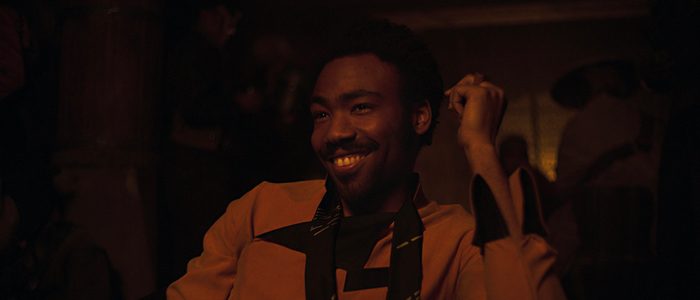
Changes
By flipping through the pages of The Art of Solo, a picture begins to form of a much different film. Part of this has to do with early drafts and outlines Lawrence Kasdan made – we can't even be 100% certain all of this made it into the shooting draft. And yet, this material seems much more interesting than the final film. More unique; more distinct.Kasdan's story started with a prologue of Han around age 12, living like Oliver Twist and working for a crime boss. In this draft, Corellia – where we first meet Han – was more like 19th century Dickensian London, complete with industrial factory smoke. There are elements of this in the final film, but it's muddled, and feels a bit rushed. Also, Han is much older, which seems like a mistake – it would've been best to either cast a younger actor, or nix this prologue entirely.One of the biggest differences in early incarnations of the film and the movie as it is now is Qi'ra, Han's love interest played by Emilia Clarke. As The Art of Solo reveals, Qi'ra (originally called Kura) was going to be a "beautiful humanoid alien." Eventually, the production team nixed this idea. "There aren't many characters in Star Wars that are a mid-ground between an alien and a human," says Star Wars creature creator Neil Scanlan, reasoning that that belongs to "other franchises" – i.e. Star Trek.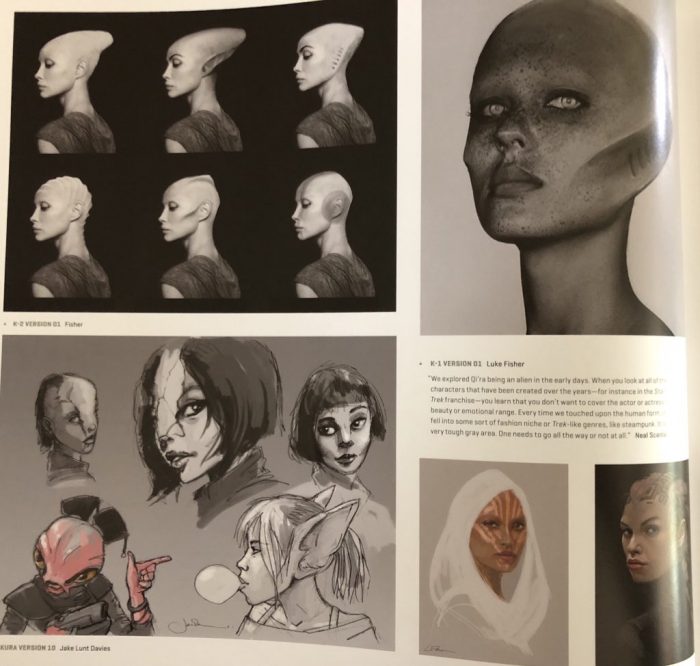 But to have Han in a romance with an alien would've been incredible, and would also make sense in such the distinct, wide-ranging galaxy that is Star Wars. Before Solo came out, co-write Jon Kasdan made headlines by revealing that Lando Calrissian is pansexual. Pansexuality seems almost to be a given in the Star Wars universe, what with the varied aliens, humans and droids constantly interact. Yet we don't actually see this in the film. Keeping Qi'ra as an alien would've given Star Wars a chance to actually make good on this idea. Instead, they decided to go with another brunette with a British accent.Qi'ra wasn't the only potential alien character in Solo. At one point, Dryden Vos, the film's chief villain played by Paul Bettany, was going to be an alien as well. This is something we know for a fact was originally going to be in Lord and Miller's film, thanks to actor Michael K. Williams, who was originally cast for the part.
But to have Han in a romance with an alien would've been incredible, and would also make sense in such the distinct, wide-ranging galaxy that is Star Wars. Before Solo came out, co-write Jon Kasdan made headlines by revealing that Lando Calrissian is pansexual. Pansexuality seems almost to be a given in the Star Wars universe, what with the varied aliens, humans and droids constantly interact. Yet we don't actually see this in the film. Keeping Qi'ra as an alien would've given Star Wars a chance to actually make good on this idea. Instead, they decided to go with another brunette with a British accent.Qi'ra wasn't the only potential alien character in Solo. At one point, Dryden Vos, the film's chief villain played by Paul Bettany, was going to be an alien as well. This is something we know for a fact was originally going to be in Lord and Miller's film, thanks to actor Michael K. Williams, who was originally cast for the part.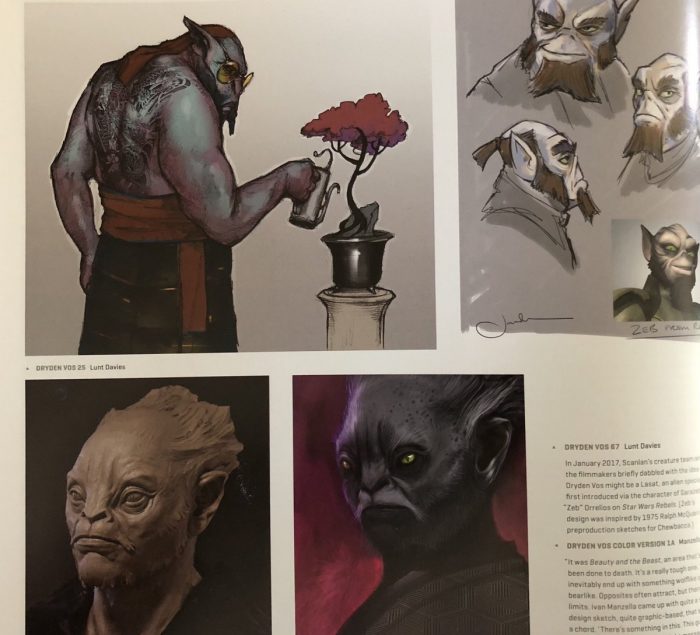
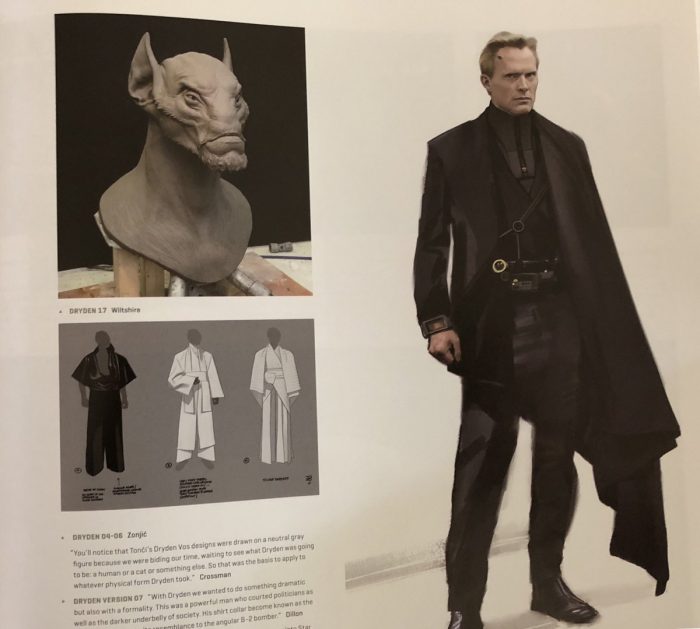 When Ron Howard came on to reshoot the film, Williams' schedule allegedly prevented him from returning, which required the part to be recast. Williams later spoke about the character, saying his take on Vos was "half mountain lion, half human":
When Ron Howard came on to reshoot the film, Williams' schedule allegedly prevented him from returning, which required the part to be recast. Williams later spoke about the character, saying his take on Vos was "half mountain lion, half human":
"He was half mountain lion, half human. He was extremely sophisticated, very rich — like he had been around the world, older guy. And he was in sort of a love triangle between Emilia Clarke's character Qi'Ra and the young Han Solo. Not where it was overtly a love triangle, but there was definitely a pissing contest going on for the girl's attention. He's old and one is younger, so it was that thing also going on, like 'Young buck, I've been around the world.' But he's like 'The young chick wants the young buck.' So there was a little bit of that energy going on. But the relationship that was on the paper was definitely with Qi'ra and Han Solo. But it there was definitely some energy going on."
The concept art shows many different alien looks for Vos. At one point, production designers considered making him a Lasat, an alien species introduced in Star Wars Rebels. To hear the Art of Solo tell it, the idea to make Vos human was due to the perceived love-triangle angle going on the film – with Han jealous of Qi'ra's possible relationship with Vos. The production team say they felt it would be hard to believe that Qi'ra would fall for an alien creature over Han, but again – why? Anything should go in the Star Wars universe, including potential romance between humans and aliens.I also think this explanation is a cop-out. My guess is that when Howard came on to reshoot, there just wasn't enough time to turn Vos into an alien. Howard had to get the film shot by October 2017, and the production was already running behind schedule. It made more sense, financially, to just slap some scars on Paul Bettany's face and call it a day.And I think that is the prevailing theme in the director shake-up. When Lord and Miller were working on Solo, they had more time. More time to explore, more time to create, more time to create a stunning, different-looking world. When Howard took over, he had to bring the film in with much less time. Corners were cut, and the end result was a film lacking a distinct spark.Other changes from Kasdan's early script work on the film, which may or may not have made it somewhere into the shooting script:
We know from the Kasdans themselves that there's at least one deleted sequence that may end up on eventual Blu-ray releases. This involves more of Han's military service. Jonathan Kasdan even had a cameo in the scene. "The reason I decided to do a cameo in that particular scene is we were sure it wouldn't get cut out," Kasdan told Indiewire, "and of course it did."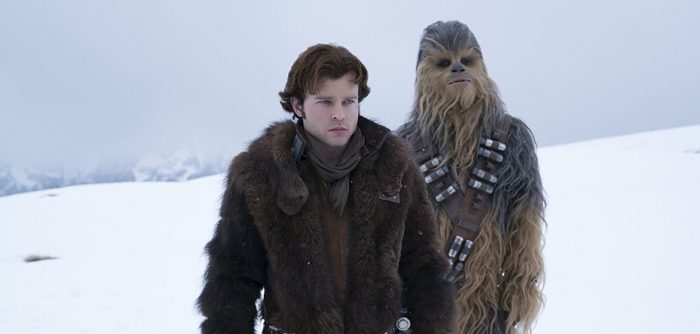
Was It Worth It?
Does any of Lord and Miller's influence remain in the final film? At least 30% of the movie is still technically their work – but which 30%? My guess: early scenes, when Han hooks up with his mentor Beckett, and Beckett's gang.These scenes are the only moments in the film – save a few scenes near the conclusion – that have a truly Western-vibe, which is ultimately what Lord and Miller seemed to be going for. These are also the only scenes to feature Thandie Newton, and we know from interviews that the bulk of Newton's work was with Lord and Miller. "Ninety percent of my stuff is with them," the actress said. "And it certainly wasn't about, 'Oh we have to start again and do it all over.'"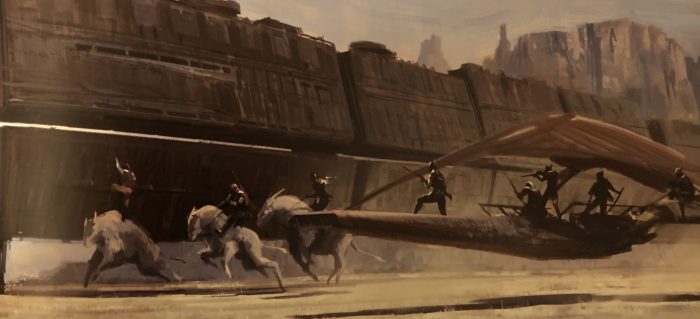 Yet even here, the Art of Solo book hints at something greater. Concept art shows Han and company riding horse-like aliens across open plains, with the train they're chasing stretching overhead as the sun blazes. It looks like something pulled directly from a Western and transported to a galaxy far, far away. The version that shows up in the film, however, is more akin to something from the Bond franchise.In the end, we'll never really know what Lord and Miller's version of Solo would've been like vs. what the film is now. I'm sure the footage they shot still exists somewhere, locked away in some vault at Lucasfilm. But we'll never see it.There's no guarantee that what they wanted to make would've turned out any better than what Ron Howard crafted. It's clear that something was going on behind-the-scenes that angered Kathleen Kennedy enough to give Lord and Miller the axe. Maybe their work really wasn't up to par. Or maybe it really was just too different for this franchise. Different doesn't always mean better, but it often results in something interesting. And I'd gladly take an interesting failure over a safe movie that's only marginally successful.And was it all worth it? Maybe not. Solo is underperforming at the box office.. Everyone worked so hard to make sure the film kept its May 25 release date, and yet the irony is, Solo might have fared better had Disney and Lucasfilm pushed it to December, which seems to be the new, safe home of Star Wars movies."It's very much the movie we sort of hoped it would be," Jonathan Kasdan said, emphasis mine. Perhaps that's the answer to the question. Was all this change, all this trouble, all this shifting from something challenging and new to something safe and predictable, worth it?Sort of.
Yet even here, the Art of Solo book hints at something greater. Concept art shows Han and company riding horse-like aliens across open plains, with the train they're chasing stretching overhead as the sun blazes. It looks like something pulled directly from a Western and transported to a galaxy far, far away. The version that shows up in the film, however, is more akin to something from the Bond franchise.In the end, we'll never really know what Lord and Miller's version of Solo would've been like vs. what the film is now. I'm sure the footage they shot still exists somewhere, locked away in some vault at Lucasfilm. But we'll never see it.There's no guarantee that what they wanted to make would've turned out any better than what Ron Howard crafted. It's clear that something was going on behind-the-scenes that angered Kathleen Kennedy enough to give Lord and Miller the axe. Maybe their work really wasn't up to par. Or maybe it really was just too different for this franchise. Different doesn't always mean better, but it often results in something interesting. And I'd gladly take an interesting failure over a safe movie that's only marginally successful.And was it all worth it? Maybe not. Solo is underperforming at the box office.. Everyone worked so hard to make sure the film kept its May 25 release date, and yet the irony is, Solo might have fared better had Disney and Lucasfilm pushed it to December, which seems to be the new, safe home of Star Wars movies."It's very much the movie we sort of hoped it would be," Jonathan Kasdan said, emphasis mine. Perhaps that's the answer to the question. Was all this change, all this trouble, all this shifting from something challenging and new to something safe and predictable, worth it?Sort of.

